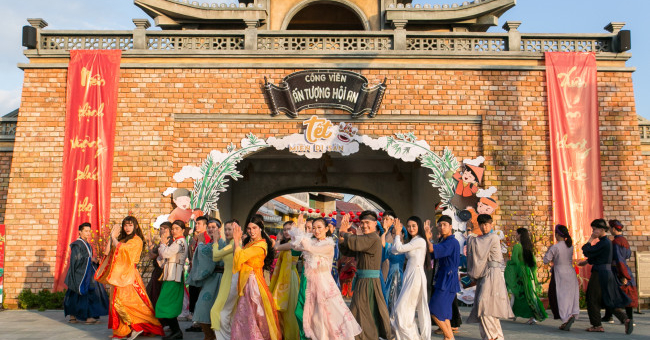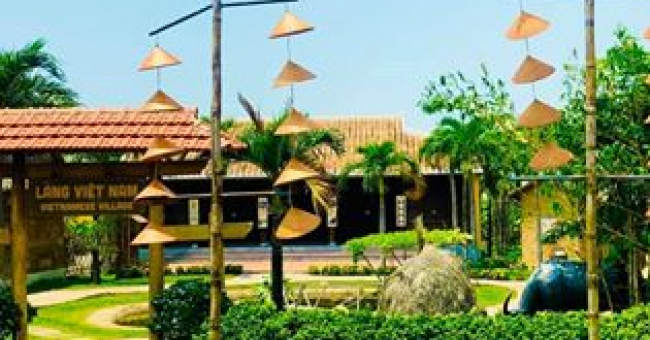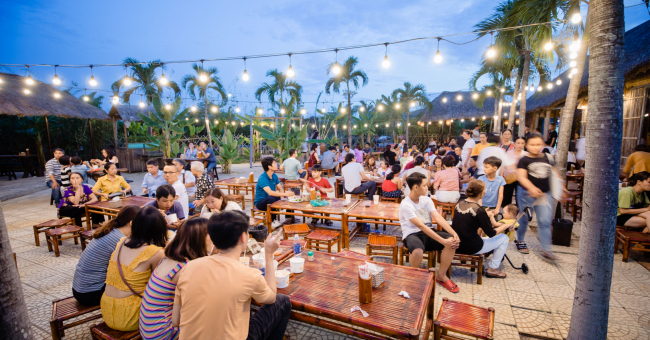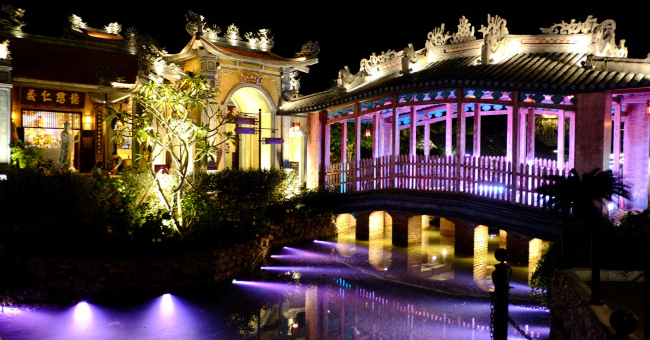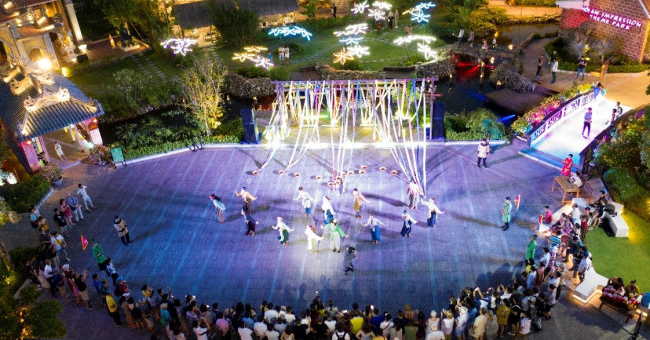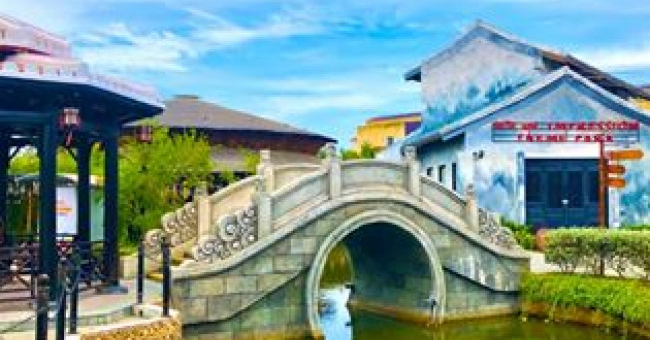
Cổng thành Công viên Ấn tượng Hội An
Được xây dựng theo mô hình di tích Quốc gia Dinh Trấn Thanh Chiêm, nơi đánh dấu sự phát triển của Đàng Trong từ triều đại của Chúa Tiên Nguyễn Hoàng.
Khu thương điếm
Thương cảng Hội An là cửa ngõ giao thương quốc tế sầm uất nhất Thế kỷ XVI — XVII. Các thương nhân người Hà Lan, Pháp, các nhà truyền giáo Bồ Đào Nha... từ phương Tây đã dừng chân tại đây và dựng nên các khu thương điếm, đại diện thu mua các sản phẩm của ta như gia vị, trà, gốm sứ, tơ lụa. Những ngôi nhà mang phong cách Hà Lan, Pháp từ đó mà hình thành, trong một bức tranh toàn cảnh về Hội An ngày ấy.
Làng Việt Nam
Với các kiến trúc quen thuộc như nhà ba gian truyền thống của làng quê Việt Nam, xung quanh đó là ao cá, gốc rạ, con trâu và cái giếng sau hè. Tại Làng Việt Nam, du khách sẽ được trải nghiệm và tìm hiểu các làng nghề truyền thống như làm nón lá, lồng đèn và nghề đúc đồng.
Khu tâm linh Thiên Đức
Đời sống người dân Việt Nam gắn liền với tâm linh và tín ngưỡng. Trong cộng đồng người Việt từ xa xưa tới nay không thể thiếu những ngôi chùa, đình làng hay các am, miếu. Khu tâm linh là một phần hoàn thiện kiến trúc đặc trưng của cộng đồng người dân Hội An nói riêng và người Việt nói chung.
Quảng trường trung tâm
Lạc bước vào cảng thị Faifo náo nhiệt, trải nghiệm các hoạt động tương tác thú vị cùng các thương nhân, lính lệ, bà mối, phú ông... Minishow "Chúa nguyễn tuyển tướng" tái hiện không khí hào hùng khi nhân dân hưởng ứng lời kêu gọi tòng quân bảo vệ non sông. Minishow "Bà chúa tằm tang" jể về nguôn gốc của tơ lụa Việt Nam, tình yêu giữa cô gái hái dâu nuôi tằm và Thái tử Nguyễn Phúc Lan.
Làng Nhật Bản
Thế kỷ XVI – XVII, cộng đồng người Nhật định cư tại Hội An có khi lên đến 600 – 700 người. Dấu ấn văn hóa Nhật để lại đậm nét trong các công trình kiến trúc, văn hóa và ẩm thực của người Hội An. Khu Làng Nhật Bản là nơi tái hiện những câu chuyện mang đậm tình bang giao hai nước Việt - Nhật.
Làng Trung Hoa
Lạc bước đến cổ trấn nơi có Minh Hương quán níu chân du khách với những món đặc sắc của người Trung Hoa như hoành thánh, há cảo... Phía trên là Phong Nguyệt Lầu, nơi diễn ra minishow "Khu rừng hạnh phúc", đưa du khách đến thế giới giải trí vương giả của giới thượng lưu, thương nhân thời xưa.
Cầu Tình yêu
Các thương lái người Nhật Bản và Trung Quốc để lại những dấu ấn văn hóa đậm nét tại Hội An.
Nhà hàng Nón Lá
Với ý tưởng chiếc nón lá của người Việt được dựng lên từ chất liệu tre truyền thống, Nhà hàng Nón Lá là điểm nhấn kiến trúc vô cùng đặc biệt tại Công viên Ấn tượng Hội An. Nơi đây sẽ phục vụ du khách các món ăn đặc sản Việt Nam - Âu - Á.




